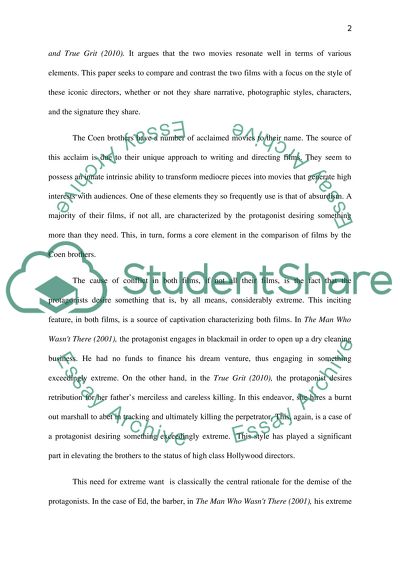Compare and Contrast Film True Grit (2010) and The Man Who Wasn't Essay. Retrieved from https://studentshare.org/visual-arts-film-studies/1476397-compare-and-contrast-film-true-grit
Compare and Contrast Film True Grit (2010) and The Man Who Wasn'T Essay. https://studentshare.org/visual-arts-film-studies/1476397-compare-and-contrast-film-true-grit.


